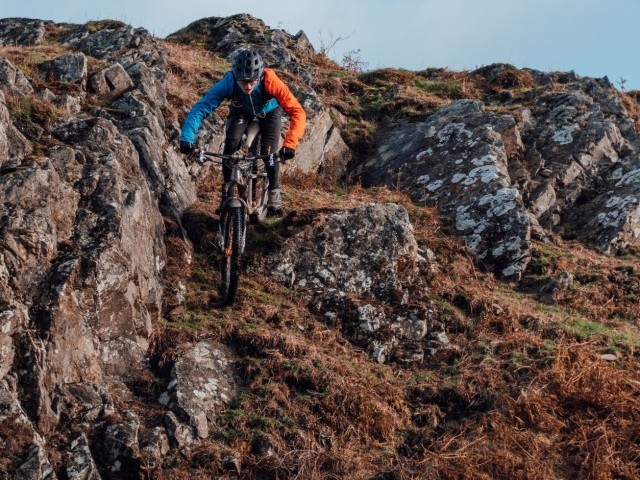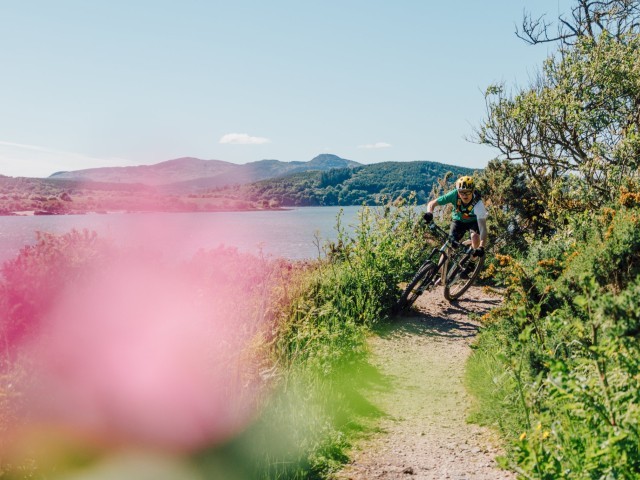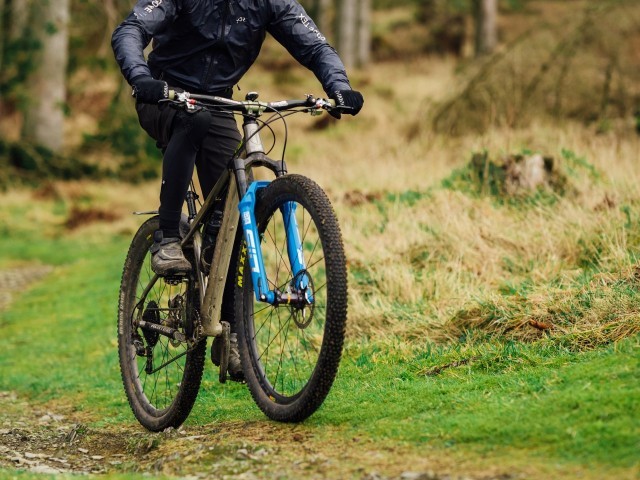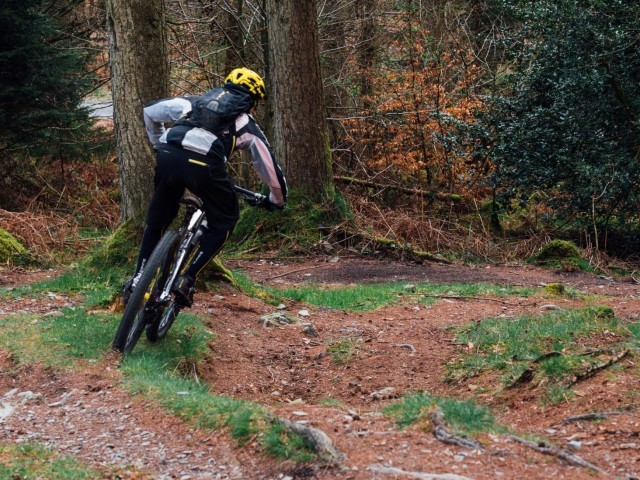
Nothing New Never Normal
Technique / Skills
Introduction
So we are back! And boy have we missed sharing our secrets of the trade with you. For obvious reasons we took a wee break but now as the globe gets a grip with the ‘whack a mole’ pain in the butt that is COVID we have rounded up the troops and got the show back on the road. So now it's time to get back into the groove and press on with our Progression Sessions.
But before we march on with our Progression Sessions we just wanted to take this opportunity to consolidate all of those previous features and get us back up to speed ready for future installments. So what should we have learned so far? The simple mantra of good technique - Vision, Speed Control, Body position, and Footwork should be hard-wired into your inner dialog by now. The techniques for braking and shifting should be second nature and the core skills of cornering, wheelie, manual, rolling drop and bunny hop should be dialed. Many of you will have progressed, taking on bigger drops with the punch and using your techniques learned from the bunny hop to progress your jumping skills. Hopefully, you can deconstruct your riding and spot any mistakes you may have made.
If you've been paying attention and doing your homework then you will have grasped the importance of getting the front center of the bike up onto and over obstacles, also, you should be feeling loose and nimble and independent from the bike, looking well ahead up the trail. You will be eyes wide open, anticipating the shapes that you are approaching. When you are climbing you should be selecting gears in advance of any changes in gradient and able to use the power wheelie to lift the front wheel up into the air to get up-onto small obstacles, or just to ease your front wheel over features like roots. You will also have grasped the concept of un-weighting the bike in these situations, using your fingertip grip to lift your bum out of the saddle slightly whilst adjusting the amount of power you’re putting through the cranks, this technique assists the back wheel to clear the obstacle.
The bits in between the climbs and the descents will require slightly faster reactions, similar techniques but with the addition of freewheeling. You will be able to lift the front wheel using the most-watched edit by our man Dan, the manual. On the flat, we have to use the combination of the power wheelie and the manual to lift the front wheel up-onto and over obstacles, likewise, we have to be stood up and out of the saddle using our limbs as suspension to help ease the back wheel up-onto and over the feature/obstacle. All the time whether climbing or on the flat, we are looking ahead, spotting our line, and anticipating the shapes we will have to make to get the bike through the trail whilst maintaining speed. Trailside obstacles such as roots, rocks, and clumps of earth require good footwork, careful pedal position/crank placement to prevent pedal strikes will be well polished by now with just the odd scrape here and there. For those of you who’ve upped the game, you will be combining your manual with a small rear wheel lift to pull a bunny hop, thus enabling you to flow even faster through the terrain.
When it comes to the descents, often considered the tricky bits, you should be at a stage where you are looking even further ahead, spotting that ride line before bringing the vision closer to the front wheel to check that you are still on target to hit the spot where you want to put the bike. Of course, remembering to look further up the trail to spot features and select your line. To re-emphasize, vision is not a static thing, the body will follow the movement of our head and therefore is important to move the eyeballs independently from the head, our head should move more in slow-speed situations and in situations where we need a sudden change of direction (often a save/recovery moment).
What seems like eons ago now, back in ISSUE 47 when I was introduced to the team I wrote about the language we use and spoke of going slow to go fast, so if you’re new to this and are yet to get to grips with my verbal diarrhea then get a look in the back issue section for no’ 47, to not only understand some of the language we use but also to look at the principles of going slowly to go fast. What I mean by this is when we are traveling quickly everything can seem busy, you don't have time to process the information and have the fast reflexes/muscle memory to move the bike around. In these moments it's easy to forget that we are riding a bike as your focus is very much on the trail ahead. The crux is if we can make the bike move on demand both vertically and laterally in an open flat environment then when it comes to riding trails we are immediately a step closer to being able to flow through the trail effortlessly.
What happens when we are in uneven terrain is that mother nature will either offer us a helping hand or present us with a feature or shape that will hinder us (or in worst-case scenarios bitch slap us into next week!). For example, there may be an ‘upslope’ or protruding features that will help us to get our wheels in the air, however, it may be that at this moment in time we do not want to go skyward, and therefore we will have to use good technique to keep the bike pressed onto the trail. There may be features on the trail that want to hinder progress and stall the bike, this requires us to lift the bike up-onto and over these types of features, You may be in a situation where you have to pull the bike out of its current line and place it in another area on the trail. There can be so many variables and shape making required, features can be sparse and spread out or a trail can be feature-rich and the shapes you make to deal with the features have to overlap in order to progress along the trail smoothly.
So from going slow to go fast in ISSUE 47 we took you through speed control in ISSUE 48, the secret of shifting through the gears in part 1, and in ISSUE 49 techniques in slowing the bike. We helped to eliminate the stall in ISSUE 50 and that opened the eyes to line choice which we took a specific look at In ISSUE 51. Winter came around and we looked at specific gear and techniques for winter riding in ISSUE 52. Getting that front-wheel up-onto and over features all started in ISSUE 53 with the wheelie, following on from this we took the process of pedaling out of the equation and covered the manual in ISSUE 54. That manual skill linked to us doing bunny hops in ISSUE 55, before taking on drop-offs in ISSUE 56. Another year passed and the topic of winter was back again, this time we looked at slipping around and dealing with slides in ISSUE 57. As the grip returned in the early spring we introduced some cornering techniques in ISSUE 58. Spring had properly sprung by ISSUE 59 where we focused on jumping technique, before heading out into the hills and finding some off-camber ISSUE 60. Along the way, I've kept cameraman Dan entertained with some hilarious mistakes shooting the video and so we looked at recovering from errors in ISSUE 61. By ISSUE 62 we’d covered so much ground it was time to look at linking all those things together, and linking sections of trail themselves. Before we took our break ISSUE 63 took one of the least favorite things for many riders, climbing.
Wow, just reflecting on all those past features it is clear we have come a long way haven't we. But let's not forget there is always room for improvement, and that leads us to consider marginal gains. For those of you just starting out, you will see big improvements very quickly, those of you who are seasoned riders will have to work that much harder to see a small improvement in performance and a small improvement in your skills and technique, as I've always said there is no substitute for time on the bike. For me, if I don't practice my skills I just get a bit rusty, it doesn't take me too long to dust them off and sharpen them up, sufficient enough to ride in very technical terrain with no scary moments whilst carrying a reasonable amount of speed. If I wanted to get back up to race pace then I would have to go that extra mile to dial in my skills and technique to be competitive, but nowadays a race plate is a very rare thing to see on my bike. So long as my skills are sufficient for me to stay safe and enjoy a decent trail ride I'm more than happy.
What I do find is that if I don’t ride that often then my fitness will drop off and this takes much more work to get back. I also find that without the fitness my skills get sloppy, and it's not just lungs and legs, it's whole body fitness. I’ve said it in previous features, mountain biking is a double-edged sword, it requires us to be mentally and physically fit and have a decent skill base to match the speed and endurance for us to get the most from it.
We are all different in that respect, some of us will struggle to maintain fitness, and some of us will struggle with the more technical aspects of riding. It is important to consider this and decide what it is you want from your riding, I aim to be a good all-rounder, reasonable with the skills yet fit enough to enjoy an all-day epic on the trails, and most importantly is for me to be able to do the same thing again and again, day in day out. I appreciate this isn’t for everybody, mountain biking has become so diverse with the younger riders jumping and jibbing and the more senior amongst us just enjoying casual off-road rides in mixed terrain. No matter what type of riding you choose to take on you will inevitably benefit from focusing on the techniques you are using, from a smooth pedal stroke to a silky smooth landing, there is always room for improvement and hopefully, future features help you get the most of whatever type of riding you do.
Not to dwell on current events but if anything the various lockdowns and travel restrictions should have given some of you plenty of time to head into the garden or street (or trails for those lucky ones who live within riding distance) and brush up on your skills, readying you for the lifting of restrictions. With summer just around the corner here in the UK and the promise of travel restrictions being lifted once again I can well imagine that many of you will be chomping at the bit to hit up some of your favorite local spots and to venture further afield to discover new pastures.
Last year we saw a huge uptake in the sport with plenty of new riders joining us, discovering the joys of taking to dirt and riding mountain bikes. If you are a regular reader then I should imagine you will be quite far down the trail with your skills and technique having studied the videos and read the features leading up to this issue. For those of you just tuning in it is well worth a look back at some of our core skill and technique features to bring you up to speed.
In the issues ahead we will look at progressing our core skills and techniques, focusing on the finer points and looking at the various environments you are likely to come across and how the skills and techniques can be used to make the most out of your riding. Dan and I will be visiting some of the U.K.’s finest riding spots, we will go both on and off the beaten track in search of epic scenery and the best trails the UK has to offer. Not only will we look at the skills and techniques on the bike, but we will also look at rider psychology and how having a positive mental attitude can help you go further and faster while hitting your lines every time.
So turn on and tune in, just don’t drop out cos you got this, top riders make it look easy because with some patience and persistence it is!
Till next time folks, keep it rubber side down, and if in doubt, just hit it harder and faster.
This technique article was in Issue 64 of IMB.
Related
By Clive Forth
Clive Forth is a rider who has been there, done that, got the t-shirt and cleaned his bike with it. He has grown with the UK scene and technological developments for the last 30 years and has competed at all levels in all disciplines riding for some prestigious brands along the way. Always looking for that extra edge with endless passion and drive he is geared up to bring you the inside line on all aspects of mountain biking skills and technique.
































